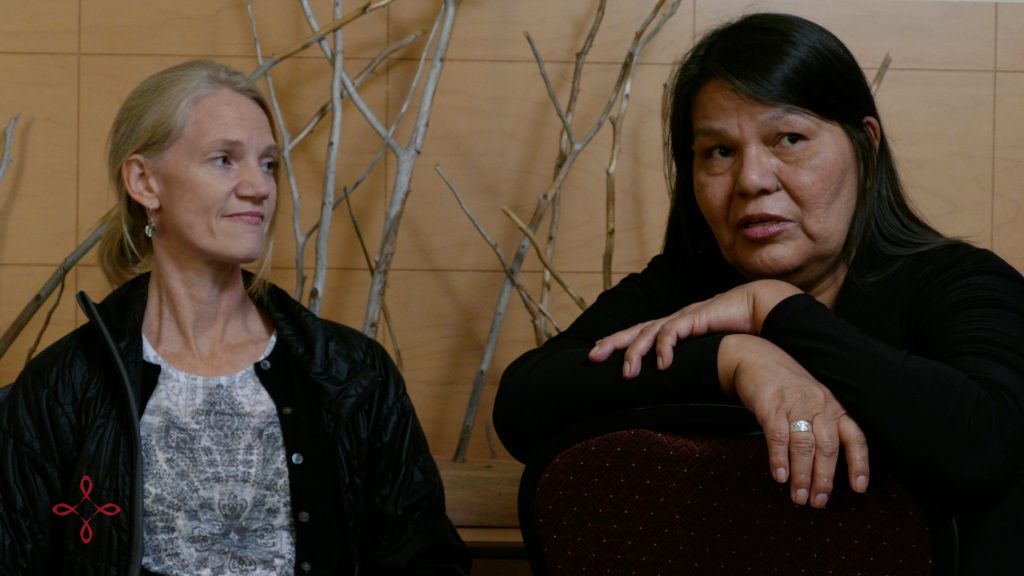Speaking at the Northern Exposures conference on Manitoulin Island, in October, 2015, Denise Jaworsky talks about need to do research locally; Tracey Prentice and Doris Peltier discuss how important it is for research to fit the community, putting community needs first and the damage that can be done by “helicopter research”; Ray Landry talks about the difference between a service provision model and client-centred therapies.
Transcript
Denise Jaworsky
My name is Denise Jaworsky and I’m just finishing up my internal medicine—my general internal medicine—training and so on both a clinician at the end of my training and a researcher in training as well as I’m doing my masters in clinical epidemiology. And my clinical interest as well as my interest in research revolves around access to care for populations living in remote and rural areas and underserved populations and in particular access to specialty care.
It’s so important to actually engage with people in smaller communities. So much of what happens is very urban-centric and a lot of the research is based in urban areas or is research done by urban researchers on people in rural areas, and it’s so important to build capacity in rural areas so that community-driven solutions can be generated from that. Because really it’s the people living in those communities that know what they need.
Tracey Prentice and Doris Peltier
I’m Doris Peltier and I work primarily with women—Aboriginal women—living with HIV, and also women that are engaged in high-risk activities. I work also as a liaison for aboriginal people living with HIV/AIDS. [Tracey Prentice] And I’m Tracey Prentice and I am a community-based researcher.
One of the big things, one of the big lessons is that it’s really important in the communities that we work with, in the research that we do, it’s really important to make the research fit the community, right. So I think often when we come from a Western perspective, the research dominates, the research approach, the research method dominates, and everything we do with community, it has to fit into the research plan. And I think for I think for us, is that we did the opposite way around, and that’s what we will continue to do—we will put the needs of the women first, and put the needs of the community first, and we’ll and we’ll make the research fit that. And because we’re working with Indigenous women, that often means ceremony, and it often means means incorporating culture, and it means a lot of things that as a non- indigenous, as a Western researcher, I wouldn’t naturally think of as part of research, right. I would think of it as sort of extra to — but in the research that we do, it’s part of the research protocol, and it has to be. And it actually has to be first, it actually has to be first. You just don’t do research that doesn’t have an immediate impact, you just don’t do research that doesn’t benefit people in some way. Everything that we do together, it has an immediate benefit in some way, right. It’s not just an honorarium. It actually builds women up, not just their pocketbook, you know it builds them up. And that’s and that’s a key component of the work that we do together. [Doris Peltier] And if we ever fall back into the old ways of doing research, like we did recently, you know, when you go in and you helicopter research. Sometimes when you’re doing focus groups, and you’re traveling around and you’re trying to get a reach a quota of community, and so you’re you’re booking lots of meetings, and like you’re going from meeting to meeting, and so that’s a kind of helicopter research. It just feels…because you’re not giving anything back—you’re just coming in and taking. And that doesn’t feel good.
Ray Landry
Hi I’m Ray Landry. I’m the manager of direct client services with Sudbury’s ASO — Réseau Access Network. I’m also the HIV support person, and right now I’m engaging in a process of trying to engage service utilizers— peers—more into service provision and decisions around their own care.
We’re so used to a “service provision” type of model, where we have what we can give to others through our mandates or through our training etc…and this is a shift in gears completely. Although we’ve talked— and I’ve heard through decades of the client-centered therapies—it was still always only a mandate being given to those who were attending vs asking for services. The challenge for me now is to stay out of setting the agenda, is really to open up a space for persons to attend and make decisions for themselves together. And for me to just be there as a structural facilitator and hopefully a person that has resources, because of our mandate to assist the process to grow, through those who engage in services.
